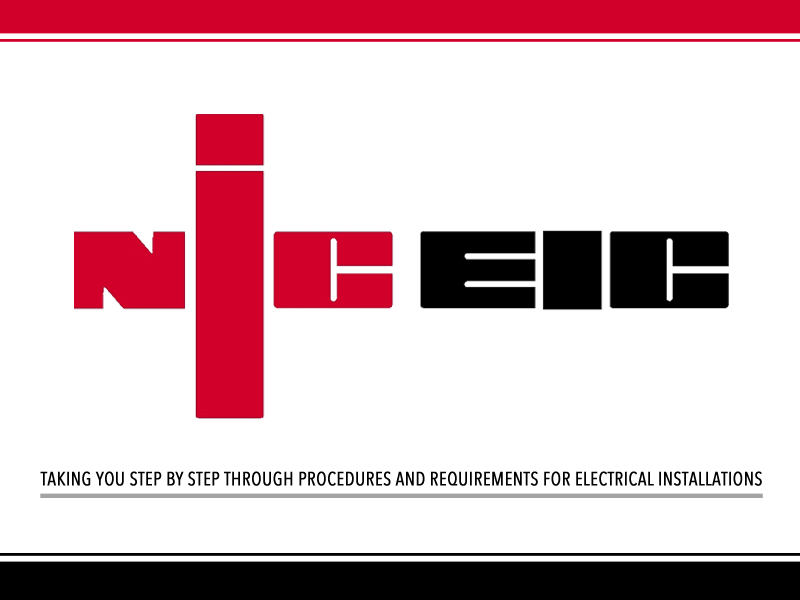
The team at the NICEIC offer their support regarding the verification of ADS.
ADS, is the most common protective measure used to provide protection against electric shock for low voltage installations and undertaking earth fault loop impedance (Zs) testing is the most common method used for verifying ADS. However, for some installations such as domestic premises where most, if not all, final circuits are provided with RCD protection, ADS may be verified without having to determine Zs.
Earth fault loop impedance testing
Earth fault loop impedance (Zs) testing is the most common method used to verify ADS for overcurrent protective devices. The purpose of the test is to confirm that under earth fault conditions the magnitude of fault current (earth fault loop current) as illustrated in Fig 1, is sufficient to disconnect the protective device within the maximum disconnection time required by BS 7671.
Earth fault loop impedance testing is performed at the relevant points of the circuit and the reading obtained at the furthest point, the highest value of circuit impedance, is recorded as the measured value of Zs. The value obtained should not exceed the maximum value permitted by the manufacturer of the protective device, taking into account any adjustment for difference in temperature between design and test values.
In the absence of the manufacturer’s impedance values for the particular protective device, verification of ADS may be confirmed by comparing the (corrected) measured impedance values against those given in the relevant tables contained in Chapter 41 of BS 7671. For example, from Table 1 the maximum permitted value of Zs for the 6 A type B (BS EN 60898) circuit-breaker shown in Fig 1, is 7.28 Ω. Therefore, to verify that under earth fault conditions the device will disconnect the circuit within the required time (0.4 s given a TN system) the measured value of earth fault loop impedance should not exceed: 7.28 Ω x 0.8 = 5.82 Ω (Appendix 3 of BS 7671 refers)
Alternatively, a calculated value of Zs may be obtained by adding the measured value of (R1 + R2) of the circuit to the external value of earth fault loop impedance measured at the consumer unit (see Fig 2) to which the final circuit is connected, based on the formula: Zs = Ze + (R1 + R2)
Verification of ADS by verifying the effectiveness of the RCD
Where an RCD is installed upstream of the overcurrent protective device, as shown in Fig 2, Regulation 643.7.1 permits a different approach to be used to verify ADS.
Considering the requirements of BS 7671 for additional protection, especially those relating to cables concealed in walls, generally all final circuits installed in domestic premises will be protected by RCDs having a residual current rating not exceeding 30 mA. Typically, this is achieved by a consumer unit having a dual RCD configuration. Therefore, where continuity of protective conductors is verified as required by Regulation 643.2.1, ADS for the final circuits connected downstream of an RCD can be confirmed by verifying the effectiveness of the RCD.
The purpose of the RCD test is to verify that the RCD will disconnect within the required time. The test performed on each RCD should be conducted at the most convenient place downstream of the device, such as at a socket-outlet. The measured reading for each RCD tested should be recorded in the appropriate column on the ‘Schedule of Circuit Details and Test Results’ which forms part of NICEIC and ELECSA certificates and report forms. For the column entitled ‘Maximum measured earth fault loop impedance’ not applicable ‘N/A’ should be recorded.
Whether an RCD is installed to provide fault or additional protection it must be tested to verify its effectiveness and where an RCD satisfies the disconnection requirements for additional protection it will also satisfy the requirements for fault protection. In either case, the results should be verified according to the function of the RCD. An RCD installed to provide fault protection must disconnect within the relevant time stated in Chapter 41 of BS 7671 when subjected to a test current equal to or greater than the rated residual operating current of the device.
An RCD installed to provide additional protection must disconnect within 40 ms when subjected to a test current of 5IΔn or greater (see note to Regulation 643.8).
Summary
Where a circuit, such as a distribution circuit, is provided with fault protection by an overcurrent device only, the verification for ADS requires the earth fault loop impedance to be determined at the furthest point of the circuit. However, where an RCD is connected upstream of an overcurrent device, the verification for ADS may be provided by testing the effectiveness of the RCD. As such, undertaking live testing to determine the earth fault loop impedance of the circuit is unnecessary











